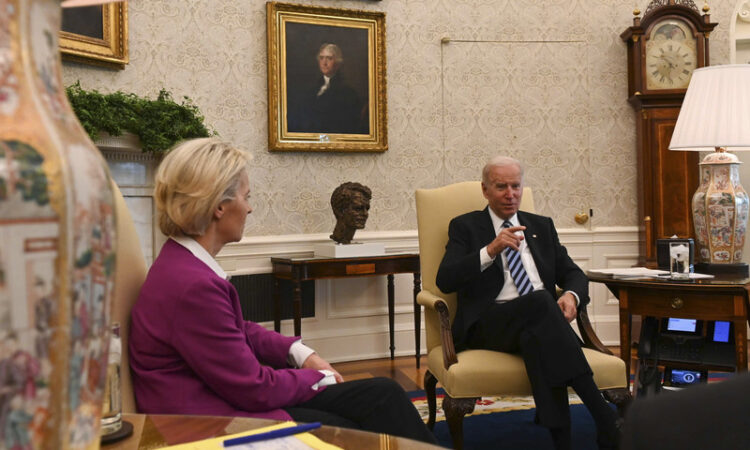
Europe is facing a turning point. After years of growth and success based on free trade, we are seeing the two of the world’s largest economics setting out a vision based on subsidies and ‘Buy National’ acts. Seeking ways to steal industry.
-

Dita Charanzová: ‘Throwing money at our problems to match the IRA or any other national subsidies will not solve them’ (Photo: Wikimedia)
So which way do we go? Do we follow or stick to the status quo? Neither. We need to find a third way and it had better be a European level one.
For the moment, the answer from Germany and France has been to throw national subsidies at their industries. In the case of Germany, €356bn approved since March 2022. 80 percent of all European subsides come from these two countries, as confirmed in a letter from commissioner Margrethe Vestager.
It sounds like a lot (and it is), but there are two problems.
Firstly, no other European countries can match it.
These are amounts higher than some member states’ GDPs. Yet Germany and France account for only 38 percent of European industry, according to Eurostat.
Industrial sectors, especially energy intense sectors, outside Germany and France will not move to the US. They will go out of business, as they cannot compete in such a fragmented single market. To save industry in two member states, we will kill the rest.
Secondly, even if you look in global competition terms, these massive amounts can still never match the subsidies from the likes of the United States and China. If we are going into a subsidies trade war based on money exclusively, we cannot win it.
We therefore need a united European solution. One that protects the single market, while supporting our companies in all member states equally and strengthening European supply chains.
While supporting a just low carbon transition, this may require us to support carbon intensive industries in the short term before net zero is possible. The premature closure or withdrawal of support would harm European sovereignty and increase our dependences on third countries, merely helping countries like China and harming us in this global struggle.
However, we must do more. We want items made in Europe, but we want them to be made here because the business environment, our skilled workers, and our regulations make businesses want to grow here. We do not want businesses to take subsidies and once the subsidies end, to leave.
This means a re-thinking of not just our educational and training programmes but also our huge regulatory programmes that add administrative burdens without giving businesses a way to meet those burdens without losses.
The last piece of the European answer is still trade with global partners. While the era of ever expanding global free trade may be over, this does not mean that Europe should or even could turn inwards towards protectionist isolation.
Among other reasons, we do not simply have the critical raw materials. According to Eurostat, the US is Europe’s largest exporting market and China the largest source on imports. Exports account for one in five jobs in Europe. It is still vital to preserve an open Europe, based on open trade with like-minded nations.
The key now is to seek new partners besides the US and China. In addition to Africa, we must especially focus more on our relationships with Latin America. Such new partnerships, based on mutual respect, must be part of our planning and solution.
We need to recognise that member states, especially large ones, looking inwardly and seeking national solutions to European problems will not work. If the European Commission allows uncoordinated national measures that fragment the single market, member states will be shooting themselves in the foot, as the British did by leaving the single market altogether.
Let us not kill the golden goose that keeps our Union united. Instead, let us invest in it and strengthen it, for the sake of our citizens and businesses. Europe will and must act to defend growth and jobs in Europe.
But let’s get this right. Millions of Europeans are counting on us. Throwing money at our problems to match the IRA or any other national subsidies will not solve them. We must do more.






